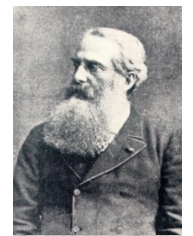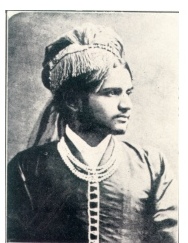
Vol 4 Page 420
FOOTNOTES TO “ZOROASTER AND HIS RELIGION”
[The Theosophist, Vol. IV, No. 8, May, 1883, p. 191]
[The writer, P. D. Khandalavala, discussing the religious teachings of Zoroaster, remarks: “. . . pre-occupied first of all with moral and metaphysical order, the reformer of Bactria could not fail to see before his spiritual eye . . . the question of the origin and of the existence of Evil. . . . As opposed to Ormuzd, the good God, and the principle of good, he admits the existence of an adverse principle . . . a principle equal to him in puissance and similar in nature, ‘the Evil Spirit’, Agra Mainyous, in Persian, Ahriman. . . . Ahriman has been eternal in the past as Ormuzd, he has had no beginning and proceeds from no anterior essence.” Upon this H. P. B. comments:]
Very naturally, for Ahriman is—matter, the begetter of all Evil, and the Destroyer, since matter—eternal per se and indestructible—having to ever change form, destroys its units, while Ormuzd, or Spirit, remains immutable in its abstract Unity and as a whole.
[The writer asks: “But how conciliate the two beings, absolute, equal, similar, co-eternal?” To this H. P. B. appends the following footnote:]
Nothing can have “no beginning and yet have an end” in the literal sense. This is contrary to all metaphysical teaching and logic. Ahriman, or Evil, “had no beginning,” because no more than spirit had matter any beginning. Were they “two co-eternal beings”—this would be a fallacy. But Matter and Spirit are one—the former at the lower, the

COL. HENRY STEEL OLCOTT
Reproduced from The Path, New York, Vol. V, May, 1890.

HIS HIGHNESS DAJI RÂJÂ CHANDRA SINGHJEE
Thâkur Sâhib of Wadhwân
?-1885
(Consult Appendix for biographical sketch.)
Page 421
latter at the higher pole of Being, differentiated in degrees, not in their essence. Ahriman “will disappear from the face of the Universe,” when “creation,” or rather matter in its differentiated condition, becomes “pure as on the first day”—i.e., when matter gradually purified becomes once more undifferentiated, or returns to its primitive condition in the seventh state of cosmic dissolution: and this takes place periodically at the Maha-Pralayas or the universal dissipation of objective matter.
[The writer then comments upon a doctrine now professed by the Parsis which “. . . supposes anterior to Ormuzd and to Ahriman, and above them both, a unique principle source of all, ‘Time illimitable,’ Zarvan-akarana, out of whose bosom there shot out by way of emanation the two principles, which are to be absorbed anew one day with the beings who people the globe.” H.P.B. comments as follows:]
As beyond Brahmâ, Vishnu and Siva, the “Creator,” the “Preserver” and the “Destroyer,” there is Parabrahman, so beyond Ormuzd in his “dual character of Ahour-mazda” and Ahriman, is placed “Zarvan-akarana”—the “one life” of the Buddhists, the Parabrahman of the Vedanta Advaitees, and the En-soph of the Chaldean kabalists, placed beyond and above the three trinitarian groups of the nine Sephiroths. Sephira, the mother of all—being exoterically the tenth, but esoterically the essence of the nine. Let us remember that Binah (Jehovah) is included in the first group yet stands second to Hokhmah or wisdom.
[In conclusion the author asks: “Did not Zoroaster understand that the notion of time necessarily implied a limit? Has he confounded it with Eternity?” To this H. P. B. answers:]
“Zarvan-akarana,” loosely translated Boundless Time, means nevertheless ETERNITY. In our limited languages with their limitations of expression and as limited a duration of life, “notion of time implies necessarily a limit.” A difference ought to be made between “absolute” and “apparent” time; between duration and eternity. Thus it is not Zoroaster who confounded time with eternity, but rather his modern followers, who, instead of reading his doctrines in Zend read and interpret them in English.